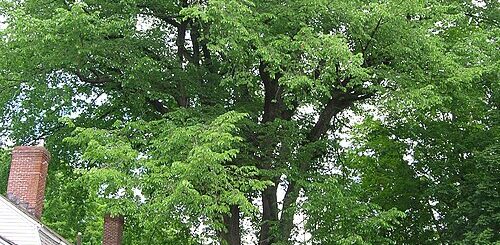Bristlecone Pine Tree – A Living Wonder of Ancient Wisdom
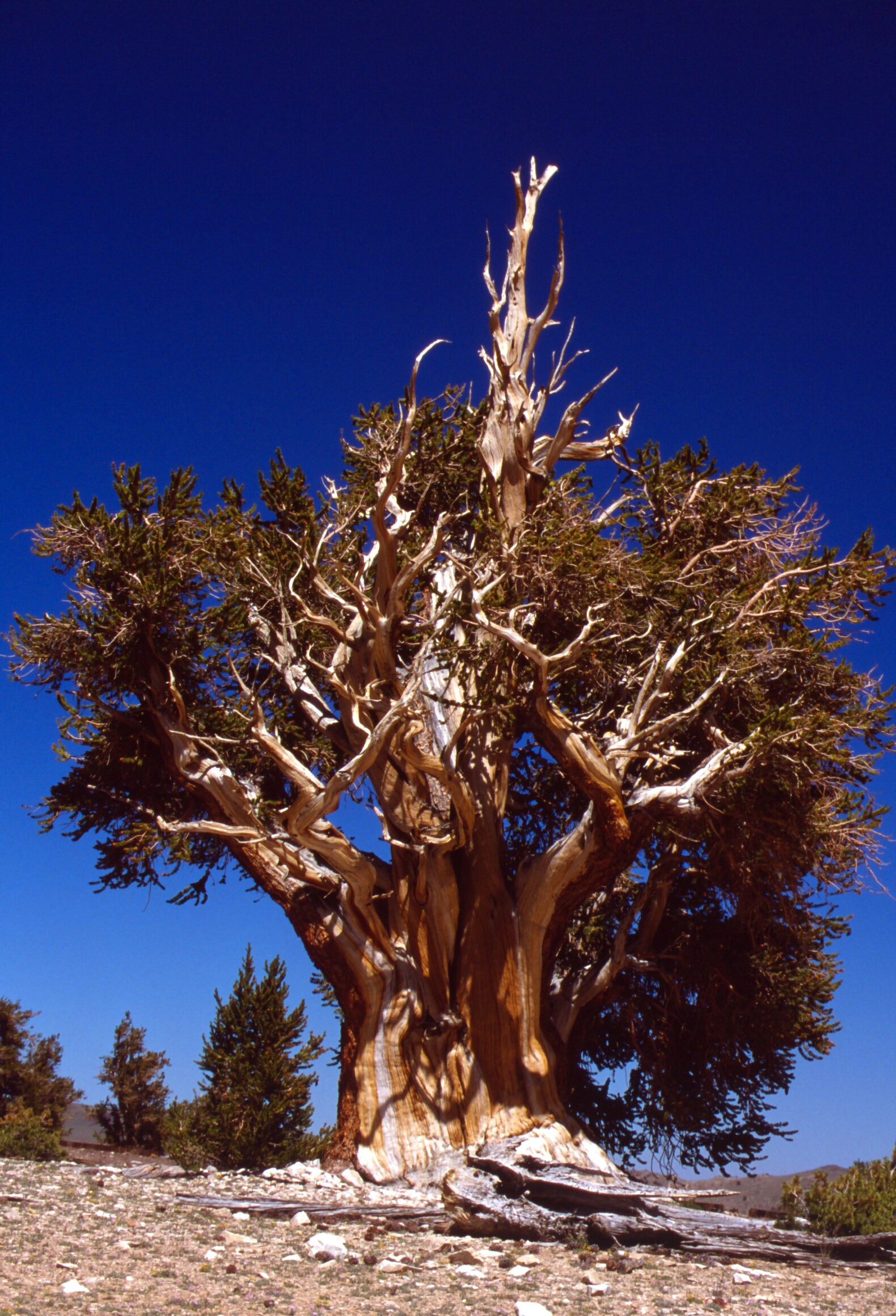
The bristlecone pine tree is one of the most remarkable species on the planet. Known for its impressive longevity and resilience, these ancient trees have stood as silent witnesses to the passing of time, with some individuals living for thousands of years. If you’re someone who appreciates the beauty of nature or has a passion for history, the bristlecone pine is a tree that demands attention. Let’s dive into the fascinating world of these living giants.
What is a Bristlecone Pine?
The bristlecone pine (Pinus longaeva) is a species of tree native to the high-altitude regions of the western United States, particularly in California, Nevada, and Utah. These trees thrive in harsh environments where few other species can survive. They are known for their twisted, gnarled appearance and distinctive long, bristle-like cones, which is how they got their name.
Bristlecone pines grow in some of the most extreme conditions, often at elevations exceeding 9,000 feet. Here, the air is thin, the soil is poor, and the weather is unpredictable. Despite these challenges, bristlecone pines are incredibly resilient, and their ability to adapt to such harsh environments has earned them their place as one of the oldest living organisms on Earth.
The Longevity of the Bristlecone Pine Tree
Perhaps the most fascinating feature of bristlecone pines is their extraordinary age. Some individuals are believed to be over 5,000 years old, making them the oldest known trees in the world. The most famous bristlecone pine, named “Methuselah,” is estimated to be about 4,850 years old, making it the oldest non-clonal tree on the planet. There are other bristlecones that have been documented at ages exceeding 5,000 years, though their locations are kept secret to protect them from vandalism.
The longevity of bristlecone pines is attributed to a combination of factors. These trees grow slowly, often only adding a few inches of height each year. This slow growth means that they put less strain on their resources, allowing them to survive in poor soil conditions. The trees also develop thick bark that protects them from insects and diseases, and they can withstand extreme weather events, such as heavy snow and strong winds, which would damage other species.
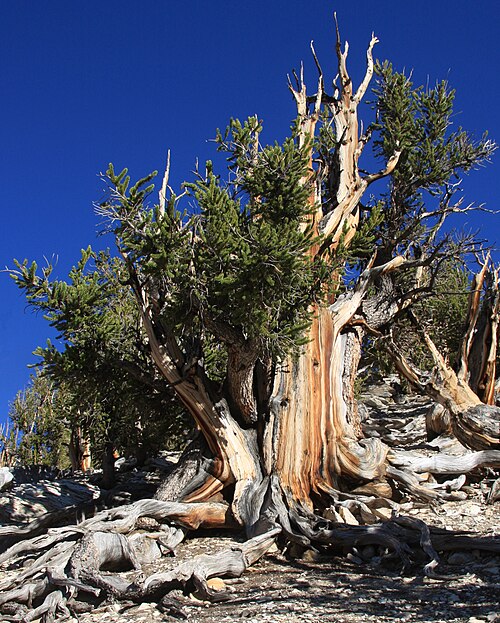
A large Great Basin Bristlecone Pine Pinus longaeva, showing both live and dead sections, and streaked grain colors on broad trunk. Along the Methuselah Trail, Schulman Grove in the Ancient Bristlecone Pine Forest of the Inyo National Forest, in the White Mountains, Inyo County, eastern California. © Creative Commons | Author: Dcrjsr
Adaptations to Harsh Environments
Bristlecone pines are well-equipped to survive in the harsh, high-altitude environments where they are found. Their roots spread out extensively to search for water and nutrients in the poor soils, while their thick bark acts as a barrier against the cold and harsh winds. The tree’s needles are long and narrow, minimizing water loss and helping it conserve moisture in the dry, arid conditions.
Interestingly, the gnarled, twisted shape of the bristlecone pine is not merely a quirk of nature. It’s a result of the extreme conditions they face. The trees often grow in a way that reduces their exposure to strong winds and intense sunlight. Some trees even appear to be partially dead, with only a small section of the tree still growing, while the rest of the trunk remains withered and desiccated. This adaptive feature helps the tree allocate its energy to the surviving portions, ensuring that it remains alive for millennia.
Why Do Bristlecone Pines Live So Long?
The lifespan of a bristlecone pine is often seen as a product of its ability to survive in extremely harsh environments. However, there is much more to it than just a tough exterior. Scientists have studied the growth rings of bristlecone pines to understand their longevity. These trees grow so slowly that each year’s growth is captured in a single ring, creating a precise record of their life. This slow growth, combined with their ability to withstand damage and stress, allows them to live far longer than most other trees.
Another factor in their longevity is their resistance to diseases and pests. The bristlecone pine has developed a strong immune system over millennia, making it less susceptible to the typical threats that other trees face. In fact, bristlecone pines can live for thousands of years in areas that are prone to wildfires, droughts, and insect infestations, while most other trees would perish in these conditions.
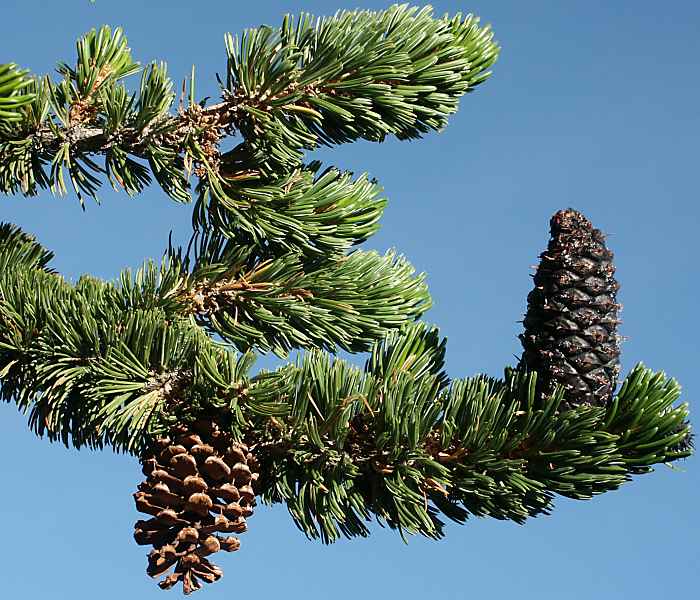
A branch of a Bristlecone Pine in the en:Snake Range of en:Nevada, showing the closely grouped needles, an immature cone (right), and a mature cone (left). © Creative Commons | Author: G. Thomas
Bristlecone Pines in Culture and History
Throughout history, the bristlecone pine has captivated the imagination of people who appreciate its ancient wisdom. The trees have become symbols of endurance, resilience, and the passage of time. Their long lives are often seen as a metaphor for the strength required to weather life’s challenges, making them a symbol of hope and perseverance.
The bristlecone pine is also of great interest to scientists and ecologists. Due to their extreme age and unique growth patterns, they are an invaluable resource for understanding climate history. The tree rings of bristlecone pines provide insights into past climates, helping scientists reconstruct ancient weather patterns and track environmental changes over millennia.
These trees have become a natural laboratory for studying aging and adaptation, offering valuable lessons in both resilience and survival. The wisdom contained within their twisted branches and centuries-old rings is a testament to the natural world’s ability to endure and adapt to even the most challenging of conditions.
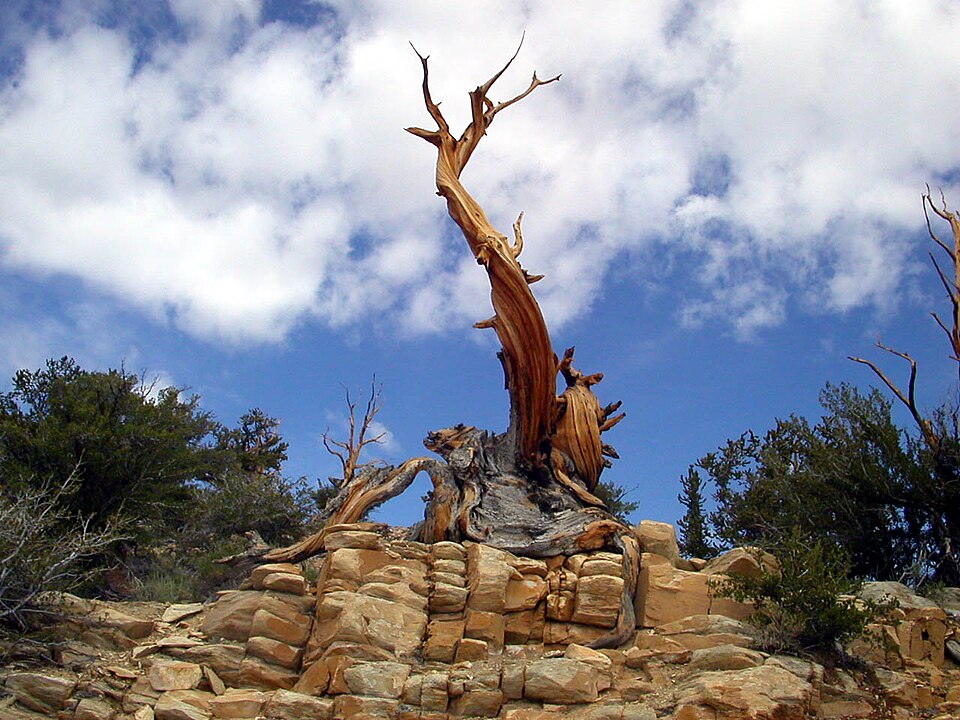
In the Ancient Bristlecone Pine Forest of the Inyo National Forest, in the White Mountains, Inyo County, eastern California. © Creative Commons | Author: Wilson44691
Visiting the Bristlecone Pines
For nature lovers and history enthusiasts, visiting a grove of bristlecone pines is an unforgettable experience. There are several places where you can see these incredible trees, including the Bristlecone Pine Forest in California’s Inyo National Forest and Great Basin National Park in Nevada. These protected areas allow visitors to explore the forests and witness firsthand the stunning beauty and resilience of the bristlecone pine.
In these areas, interpretive trails provide information about the trees and their unique ecological role, while also highlighting their importance in understanding climate change and environmental history. Standing beneath the ancient branches of these living wonders, it’s easy to feel a sense of awe and reverence for the timeless nature of the bristlecone pine.
References:
[Bristlecone Pine] https://www.nationalforests.org/blog/tree-profile-bristlecone-pine
[Wikipedia] https://en.wikipedia.org/wiki/Pinus_longaeva



